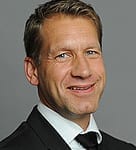Congress Newsletter 2021
EA21 Newsletter: ESAIC Journals and the new editor-in-chief Marc Samama
Professor Marc Samama (Department of Anaesthesia, Intensive Care and Perioperative Medicine, GHU AP-HP. Centre – Université de Paris) has taken over as the Editor-in-Chief of the society’s official journal EJA, and the soon to be established new journal EJAIC, which will incorporate more intensive care medicine.
Q: Hello Marc and we hope you enjoyed Euroanaesthesia – tell us about how it has been in your first months as Editor-in-Chief?
A: Very busy, extremely demanding but very exciting. I’m more than happy to run this job.
Q: Your predecessor Martin Tramer spent 10 years at the helm, across which the impact factor improved substantially. How hard is it to improve the impact factor of a journal, what kind of things make a difference?
A: We have to increase the quality of published materials (favouring RCTs, meta-analyses, reviews and guidelines) while controlling the number of manuscripts. This is a very hard task as we are always lacking pages (with a maximum of 100 allowed per issue).
Q: You have a new team of assistant editors helping you with the journal, with a vast range of experience. How are things going with the new team, on top of all the responsibilities you all have managing the COVID-19 pandemic?
A: They are a highly competent and very friendly group. All are very much involved in the Journal, either for the triage, the table of contents, the proofs and many handled manuscripts. Each of the team is always available for advice or some help.
Q: Most of our delegates are familiar with EJA, but what is the reasoning behind launching a new journal, the European Journal of Anaesthesiology and Intensive Care (EJAIC)? When do you think the first edition of the new journal will be out?
A: Publishing only in open-access journals is becoming mandatory for several major institutions. On top of that Intensive Care is part of our daily activities and the name of the society has changed in this regard. We had to dedicate some more room to ICM.
Q: What are some of the changes you have made to the EJA since taking charge?
A: With the eight Deputy Editors we have implemented many changes, with a weekly triage meeting by Zoom and a much more severe selection or ‘excluding’ of the manuscripts as we have a three months backlog. We’ve had several meetings with important ESAIC committees (ICM, Guidelines, Research) and have discussed our policies. We have defined new rules for the publication of guidelines, editorials, case reports. Key bullet points that summarise the article are now part of each manuscript. We are also very sensitive to similarities and plagiarism. We are now recording and posting podcasts and videos every month.
Q: What are some of the things that distinguish a good quality research paper from a more average paper?
A: The methodology, the compliance to good research rules, the seriousness of the authors, the innovative ideas, the honesty in the statistics, a strong and balanced discussion, a prospective for the results, etc.
Q: There does not seem to be much COVID-19 content in the journal as yet – what are the reasons for this?
A: Most of COVID data are shared very quickly and our delays for rapid publication are too long. However, a few papers have been published.
Q: How much time in a working week is dedicated to the management of the journal – are you left with little time to relax?
A: Two days and a half as an average!
Q: And when you can relax, what do you like doing?
A: Biking and walking
Thanks Marc and we hope you enjoyed Euroanaesthesia 2021.
Read More of our special newsletter covering our virtual congress










